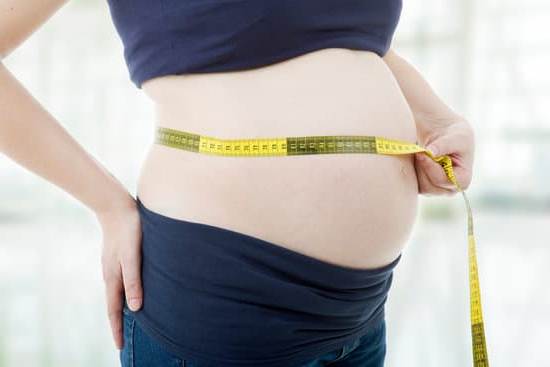Spotting during ovulation can be a confusing and concerning experience for many women. The question on their minds often is: does spotting during ovulation mean pregnancy? Ovulation is a crucial phase of the menstrual cycle where the egg is released from the ovary, making it prime time for conception. Understanding what happens in your body during this time can help shed light on spotting and its possible implications.
Ovulation typically occurs around the middle of your menstrual cycle when an egg is released from the ovary into the fallopian tube. This process involves a complex interplay of hormones that prepare the uterus for potential implantation of a fertilized egg. Spotting, or light bleeding, during this time may raise concerns about pregnancy, but it’s essential to differentiate it from other causes like implantation bleeding or irregular periods.
It’s important to distinguish between regular menstrual bleeding and spotting, as they differ in flow and duration. Spotting during ovulation can have various causes such as hormonal fluctuations, cervical changes, or even stress.
While spotting alone during ovulation is not usually a sign of pregnancy, knowing how to differentiate between different types of bleeding can provide insight into your reproductive health. This article will delve deeper into the causes of spotting during ovulation and whether it could potentially indicate conception.
Understanding Ovulation
Ovulation is a crucial phase in the menstrual cycle of a woman where a mature egg is released from the ovary and is ready to be fertilized by sperm. This process typically occurs around the middle of a woman’s cycle, usually between days 11-21 for those with a 28-day cycle. Understanding what happens in your body during ovulation can help you recognize any unusual signs or symptoms that may arise during this time.
Hormonal Changes
During ovulation, hormones such as estrogen and luteinizing hormone (LH) surge to facilitate the release of the egg. These hormonal changes trigger physical symptoms like increased cervical mucus production, higher basal body temperature, and even mood swings in some women. These changes are essential for preparing the body for pregnancy.
Ovarian Activity
Typically, only one egg is released during each ovulation cycle. The ovaries take turns releasing an egg alternately each month. Once released, the egg travels through the fallopian tube towards the uterus, where it can potentially be fertilized by sperm. If fertilization does not occur within 12-24 hours after ovulation, the egg disintegrates and is absorbed by the body.
Signs of Ovulation
Aside from hormonal changes and ovarian activity, there are other common signs of ovulation that women may experience. These include mild cramping or discomfort on one side of the pelvis (known as mittelschmerz), increased sexual desire, breast tenderness, and even spotting in some cases. It is important to pay attention to these signs to better understand your body’s menstrual cycle and fertility window. However, it’s crucial to note that not all women experience spotting during ovulation.
What Is Spotting and How Is It Different From a Regular Period
Spotting refers to light bleeding that occurs outside of your regular menstrual period. It is often much lighter in flow compared to a typical period and can range in color from pink to brown. Spotting can occur for various reasons, including hormonal changes, ovulation, or even as a result of pregnancy.
Spotting during ovulation is common and usually happens around the time of an egg’s release from the ovary. This type of spotting is known as ovulation spotting and can last for a few hours to a couple of days. It is often caused by the sudden drop in estrogen levels just before ovulation takes place.
Differentiating between spotting during ovulation and a regular period can be challenging for some individuals. One key difference is the timing – spotting during ovulation typically occurs mid-cycle, around two weeks before your next period is due. In contrast, a regular period follows a consistent cycle length each month. Additionally, the flow of blood during ovulation spotting tends to be much lighter than that of a normal period.
| Spotting During Ovulation | Regular Period |
|---|---|
| Mid-cycle occurrence | Occurs at end of cycle |
| Lighter flow | Regular flow |
Causes of Spotting During Ovulation
Spotting during ovulation can be a common occurrence for many women, and it is essential to understand the various causes behind it. One primary reason for spotting during ovulation is the hormonal changes that take place in your body during this time. The surge of luteinizing hormone (LH) triggers the release of an egg from the ovary, which can sometimes cause a small amount of bleeding.
Another possible cause of spotting during ovulation is the rupture of the follicle when the egg is released. This can lead to some light bleeding or spotting as the egg makes its way down the fallopian tube. Additionally, increased cervical mucus production during ovulation can also contribute to spotting. The thinning of cervical mucus to allow easier passage of sperm can sometimes result in small amounts of blood being mixed in, leading to spotting.
Furthermore, factors such as stress, changes in diet or exercise routine, and certain medications may also play a role in causing spotting during ovulation. It is essential to keep track of your menstrual cycle and any accompanying symptoms to identify patterns and potential triggers for spotting. If you experience consistent or heavy bleeding during ovulation or have concerns about your symptoms, consulting a healthcare provider is recommended.
| Causes | Factors |
|---|---|
| Hormonal Changes | Luteinizing Hormone Surge |
| Rupture of Follicle | Egg Release |
| Cervical Mucus Production | Changes in Diet or Exercise Routine |
Can Spotting During Ovulation Be a Sign of Pregnancy?
Spotting during ovulation can be a common occurrence for many women, but it can also raise questions about the possibility of pregnancy. Understanding the relationship between spotting and pregnancy is crucial for those trying to conceive or avoid pregnancy. Here are some key points to consider:
- Implantation Bleeding: One possible cause of spotting during ovulation that may be mistaken for a sign of pregnancy is implantation bleeding. This occurs when a fertilized egg attaches itself to the uterine lining, typically around 6-12 days after conception. It is usually light in flow and may be accompanied by mild cramping.
- Hormonal Changes: Spotting during ovulation can also be due to hormonal fluctuations in the body. These changes can affect the thickness of the uterine lining and cause light bleeding. While this can happen during ovulation, it does not necessarily indicate pregnancy.
- Tracking Symptoms: For those actively trying to conceive, tracking ovulation symptoms, including spotting, can help determine the most fertile days for intercourse. However, relying solely on spotting as an indicator of pregnancy is not always reliable.
It’s essential to remember that spotting alone during ovulation does not confirm or rule out pregnancy. If you suspect you may be pregnant or are experiencing abnormal bleeding patterns, it’s best to consult a healthcare provider for guidance.
By discussing your symptoms and concerns with a medical professional, you can receive personalized advice and appropriate testing if necessary. Remember, every woman’s body is unique, so what works for one person may not apply to another when it comes to fertility and conception.
Ultimately, understanding your body’s signs and symptoms during ovulation is crucial for overall reproductive health. Whether you are trying to conceive or simply monitoring your menstrual cycle, being aware of potential indicators like spotting can empower you to make informed decisions about your reproductive well-being. By staying proactive about your health and seeking professional guidance when needed, you can navigate the complexities of fertility with confidence and clarity.
How to Differentiate Between Ovulation Spotting and Implantation Bleeding
Spotting during ovulation can sometimes be confused with implantation bleeding, leading to questions about the possibility of pregnancy. Understanding the key differences between these two occurrences can help you decipher what your body may be signaling to you. Here are a few ways to differentiate between ovulation spotting and implantation bleeding:
- Timing: Ovulation spotting typically occurs around the middle of your menstrual cycle, roughly 10-14 days before your next period is due. This is when an egg is released from the ovary and can lead to light bleeding or spotting. On the other hand, implantation bleeding occurs when a fertilized egg attaches itself to the uterine lining, usually around 6-12 days after conception.
- Flow: The flow of blood during ovulation spotting is usually very light and may appear as pink or brown discharge. Implantation bleeding, on the other hand, tends to be lighter than a regular period but slightly heavier than ovulation spotting. It may also contain small clots.
- Duration: Ovulation spotting typically lasts for a shorter duration compared to implantation bleeding. While ovulation spotting may last for a day or two at most, implantation bleeding might persist for up to three days.
Understanding these distinctions can help you interpret what your body is experiencing and provide clarity on whether you should consider the possibility of pregnancy when observing spotting during ovulation.
It’s important to note that while ovulation spotting can occur naturally as a result of hormonal changes during your cycle, implantation bleeding is considered one of the early signs of pregnancy. If you are trying to conceive and experience any unusual bleeding or spotting outside of your usual cycle, it’s advisable to take a pregnancy test or consult with a healthcare provider for further guidance on your specific situation.
Listening to your body’s signals and being aware of potential signs and symptoms can empower you to make informed decisions regarding your reproductive health.
When to Consult a Doctor
When Should You Consult a Doctor?
If you experience spotting during ovulation, it may not necessarily indicate a serious issue. However, if the spotting is accompanied by intense pain, fever, unusual discharge, or lasts for an extended period of time, it is advisable to consult a healthcare provider. Additionally, if you have been trying to conceive without success or have a history of reproductive health issues, seeking medical advice can be beneficial.
Medical Evaluation for Ovulation Spotting
During your consultation with a healthcare provider regarding spotting during ovulation, they may inquire about your menstrual cycle, sexual activity, and any other symptoms you may be experiencing. In some cases, they may recommend further tests or examinations to rule out any underlying conditions that could be causing the spotting. These evaluations can provide valuable insights into your reproductive health and help address any concerns you may have.
Seeking Fertility Assistance
For individuals who are actively trying to conceive and notice spotting during ovulation, consulting with a fertility specialist may also be beneficial. Fertility experts can conduct specialized tests to assess your reproductive health and provide guidance on optimizing your chances of pregnancy. By seeking timely medical advice and intervention when needed, you can better understand your body’s signals and take proactive steps towards achieving your desired outcome of conception.
Conclusion
In conclusion, spotting during ovulation does not necessarily mean pregnancy. While it can be a sign of fertility and ovulation, it is important to understand that ovulation spotting is a separate phenomenon from implantation bleeding, which may indicate pregnancy. Being in tune with your body’s signs and symptoms during ovulation can help you better understand your menstrual cycle and increase your chances of conception if that is your goal.
If you experience spotting during ovulation and suspect it may be related to pregnancy, it is important to take a pregnancy test to confirm. Consulting with a healthcare provider can also provide more insight into the potential causes of spotting and any other symptoms you may be experiencing. Your doctor can offer guidance on how to track your cycle effectively and discuss any concerns you may have about fertility or reproductive health.
Overall, understanding the nuances of ovulation spotting versus implantation bleeding can help alleviate some confusion or anxiety around these common occurrences in menstruating individuals. By staying informed and seeking medical advice when needed, you can navigate these changes in your body with confidence and make informed decisions about your reproductive health journey.
Frequently Asked Questions
Can You Spot During Ovulation and Be Pregnant?
Spotting during ovulation is actually a common occurrence for some women. It can happen due to the hormonal changes and the release of the egg from the ovary. However, it is not necessarily an indicator of pregnancy since ovulation spotting typically occurs before conception.
What Are the Symptoms of Pregnancy During Ovulation?
Symptoms of pregnancy during ovulation can vary from woman to woman. Some common signs include breast tenderness, fatigue, increased cervical mucus, and slight cramping. However, these symptoms can also be caused by other factors, so it’s best to take a pregnancy test for confirmation.
Is Implantation the Same as Ovulation?
Implantation and ovulation are two distinct phases in a woman’s menstrual cycle. Ovulation occurs when an egg is released from the ovary, while implantation happens when a fertilized egg attaches itself to the uterine lining. Implantation typically occurs around 6-12 days after ovulation.

Welcome to my fertility blog. This is a space where I will be sharing my experiences as I navigate through the world of fertility treatments, as well as provide information and resources about fertility and pregnancy.





